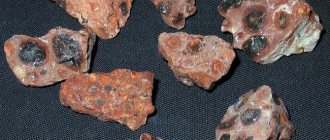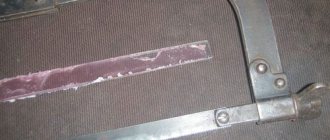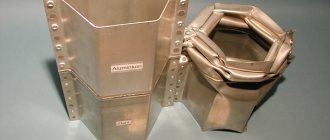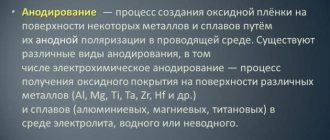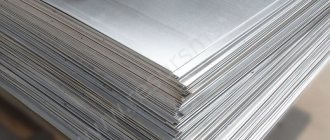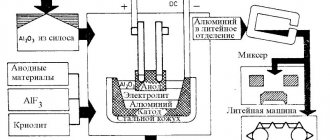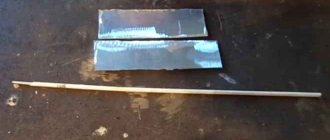- Composition of coolant (COTS)
- Additives in coolant for machine tools
- Main functions of coolant
- Coolant classification
- Cutting fluids for cutting operations
- How to properly use coolant for machine tools
When processing metals by cutting or plastic deformation, a large amount of heat is released. As a result of heating the working tool and the workpiece surface, the quality of processing deteriorates, the wear of expensive tools and equipment increases, and the structure of the surface layers of the workpiece metal changes. This, in turn, leads to a decrease in performance properties and quality of final products.
To prevent the listed manifestations and improve the quality of surface treatment of the workpiece, special cooling technical means are used - COTS.
According to their state of aggregation, COTS are divided into gaseous, liquid, and solid.
The most widely used liquid coolants are cutting fluids (cutting fluids).
Cutting fluid (coolant)
– a special substance used in the operation of metal processing machines. Each technological process of a turning or milling machine is accompanied by friction, which can lead to deformation of the workpiece, breakdown of an expensive machine or its part, and a change in the mechanical properties of the metal.
The main purpose of coolant for metalworking is to separate surfaces subject to friction and reduce the temperature of the tool. This fluid forms a lubricating film on the working surfaces, which reduces friction and the force required for cutting. The introduction of special additives into the composition of the product simplifies the cutting process - liquid molecules quickly penetrate microcracks on the metal surface and, as it were, drive a wedge between its particles.
Composition of coolant (COTS)
The composition of most metalworking coolants is approximately the same. In products of different manufacturers and names, only the concentration of a particular substance or additive needed by a specific process or metal changes.
Effective coolant for machine tools includes:
- Lubricants made from natural or synthetic oils
- Additives with various performance properties
- Substances that prevent the separation of cutting fluids into fractions
- Anti-corrosion and wear-reducing components
- Additives that reduce foaming and aggressiveness towards processed metals
Lubricant for drilling stainless steel
The drilling operation also requires the application of a cooling lubricant. This is done more to preserve the instrument. In the process of continuously drilling a hole in metals of a strong composition, the drill often begins to overheat and subsequently become dull.
There are two known ways to solve this issue - periodic stops, during which the drill will cool, or the use of an emulsion for cooling. As a rule, the second option is preferable; it will save time and money on a new drill. To do this, use an oil-based lubricant for drilling stainless steel; as a home equivalent, it is fair to use regular machine oil.
After drilling a hole a little, add oil to it, or periodically lubricate the drill with the product using a brush.
Additives in coolant for machine tools
Additives are an important component of metalworking coolants. Having a very small concentration, they can significantly improve the quality and efficiency of working with metal.
Additives for various purposes perform several important functions:
- Increases the resistance of metals to corrosion
- Anti-wear by reducing wear on tool working surfaces
- do not allow scuff marks to form on the surface of the metal workpiece during processing,
- Prevents the formation of foam, which reduces the quality of the coolant, and the appearance of oil mist, which is harmful to the skin and respiratory organs of working personnel
Coolant for copper/wire drawing
When working with copper wire, emulsions of different compositions are used, in accordance with the stage of the work. The initial stage will be rough drawing, in this case, the first step is to use an oil-based composition. It will optimally cool the product and give the primary processing the desired properties.
The second step is to use exclusively coolant for wet wire drawing, in the form of an aqueous emulsion. This is a finishing version of processing, and the final stage of part formation.
Main functions of coolant
Lubricating and cooling fluids for metal-cutting machines perform the following main functions:
- Cools cutting tools that get hot during operation and increases their service life
- Improving the quality of metal surface treatment
- Removing dust, dirt, metal shavings, etc. from working surfaces.
- Lubrication of the friction zone to increase the service life of cutters, reduce the coefficient of friction and heat generation
- Increasing machine productivity by increasing speed, improving quality and precision of processing
Emulsol for paving slabs
In this case, the lubricant serves to facilitate the process of creating tiles. A special form is lubricated with an emulsion, then a concrete solution is poured into it. After drying, the product is easily and simply removed from the mold due to the fact that the mold has been lubricated, this significantly speeds up the work process.
The following compounds can be used as lubricants: KSF-1, Nometal, AGAT-B9, Separen.
But no one cancels the use of improvised means, in the form of machine oil or soap solution. With their help, you can also prepare an emulsol for paving slabs with your own hands.
Source
Coolant classification
Each technological process requires a coolant, the properties of which will best meet the specifics of the material and the characteristics of the machine.
Typically, metalworking production uses several types of metalworking coolants:
- Oil coolants.
Their base is mineral or synthetic oil. To obtain special properties of the liquid, additives are added to the composition. Such coolants perfectly lubricate surfaces, but do not reduce temperatures well, so they are used for soft metals for simple work.
- Water-miscible coolants
– these liquids may contain alcohols, emulsifiers, oils, electrolytes, additives, etc. They cool tools and metals well, but have modest lubricating characteristics,
- Mineral cutting fluids
– produced from petroleum products, used primarily for the operation of milling and lathes for cutting steel,
- Synthetic and semi-synthetic coolants
– these types of cutting fluids are made on the basis of a mixture of water-soluble half-mirs with the addition of surfactants, inhibitors, biocides, etc.
- Coolant emulsions
– compositions with a higher concentration of dispersed components compared to water-miscible ones. Such fluids have excellent lubricating and anti-wear characteristics.
In addition to composition, cutting fluids can be classified according to other criteria, for example:
- Based on the method of preparation or composition of the working fluid, a distinction is made between emulsols - ready-made liquids that contain additives that prevent separation - and coolant concentrates, mixed with water before use to obtain coolant emulsions.
- By viscosity, flash point, acid number, etc. (oil coolants)
Types of coolant for metal forming processes
Due to the significant specific forces, as well as the speeds of relative sliding of the workpiece material along the tool, grades for use in technological processes must have a significantly higher viscosity. In addition, at significant degrees of deformation, chemical-mechanical surface reactions begin on the contact surfaces, contributing to the deterioration of friction conditions. This reduces tool life, particularly when machining soft metals such as aluminum. It is unacceptable to use partially waste substances when processing aluminum. Therefore, the characteristic features of these compositions for Russian conditions are:
- Quite high viscosity. In practice, it varies from 45 - 50 cSt for coolants based on mineral oils of type I20 (GOST 20799-88), to 75 - 80 cSt for coolants with sulfur compounds and animal fats (a typical representative is Ukrinol GOST 9.085-88);
- Resistant to high temperature delamination or fracture. The composition necessarily contains sulfur additives and anionic emulsifiers. The most commonly used brands include ethanolamines and alkyl sulfates with additives in accordance with GOST 10534-88. In waste products, the concentration of such components decreases sharply;
- Water-based graphite types, including an additive based on an oil suspension of fine-flaked graphite. Produced in accordance with GOST 5962-88.
A special group is represented by substances used in the processing of aluminum and its alloys. Aluminum is characterized by intense adhesion to the contact surfaces of the equipment, so it should be ensured not so much a decrease in temperature as a high cleanliness of the final surface of the product.
For example, when rolling aluminum sheets, the following are used:
- Products based on 5 - 10% lubricant 59c (GOST 5702-85);
- Emulsols based on synthetic fatty acids with the addition of triethanolamines (GOST 8622-85);
- Substances containing high molecular weight synthetic alcohols: for example, ethylene glycol GOST 10136-97 or glycerin GOST 6823-97.
Quite a lot of coolant systems designed for working with aluminum are produced according to the specifications of Russia and other CIS countries. The viscosity of such compositions for processing aluminum is usually assumed to be minimal.
Cutting fluids for cutting operations
Let us note which cutting fluids are most common when carrying out various cutting operations on lathes:
- One and a half percent solution of soda ash in boiled water (for rough grinding)
- Water, trisodium phosphate and sodium trinitrate – increases anti-corrosion resistance
- Water, emulsol and soda - ensures high quality grinding
- Oil (industrial and linseed) and kerosene - for high-precision work with expensive cutters
- Sulfofresol and kerosene - for deep metal drilling
- Kerosene – when working with aluminum and its alloys
Metal forming also requires the use of metalworking coolants, but such materials must have special properties. Metal forming is characterized by significant forces and low sliding speed between the workpiece and the tool, therefore the coolant must be sufficiently viscous and resistant to delamination at high temperatures. Often, such fluids contain fine-flaked graphite, which minimizes friction in the plastic deformation zone.
Special lubricants and cooling materials are also used when working with aluminum and its alloys. This metal tends to stick to the surfaces of the cutting tool with which it comes into contact. For this reason, cutting fluids for aluminum must provide high quality finishing of the workpiece. When working with aluminum, emulsions of coolant based on fatty acids and substances with ethylene glycol or glycerin are usually used.
Coolant for aluminum and alloys
Aluminum is considered a soft and pliable material, but despite this, processing without cutting fluid (coolant) will not work at all. When working with this metal, a lot of waste is generated in the form of chips, which, sticking to them, clog the tool, especially the cutter, and interfere with further work. This can also lead to complete equipment failure. Therefore, coolant for milling aluminum must guarantee the quality of finishing. For these purposes, formulations based on glycerin, ethylene glycol, or fatty acids are perfect.
Types of coolant for metal forming processes
Due to the significant specific forces, as well as the speeds of relative sliding of the workpiece material along the tool, grades for use in technological processes must have a significantly higher viscosity. In addition, at significant degrees of deformation, chemical-mechanical surface reactions begin on the contact surfaces, contributing to the deterioration of friction conditions. This reduces tool life, particularly when machining soft metals such as aluminum. It is unacceptable to use partially waste substances when processing aluminum. Therefore, the characteristic features of these compositions for Russian conditions are:
- Quite high viscosity. In practice, it varies from 45 - 50 cSt for coolants based on mineral oils of type I20 (GOST 20799-88), to 75 - 80 cSt for coolants with sulfur compounds and animal fats (a typical representative is Ukrinol GOST 9.085-88);
- Resistant to high temperature delamination or fracture. The composition necessarily contains sulfur additives and anionic emulsifiers. The most commonly used brands include ethanolamines and alkyl sulfates with additives in accordance with GOST 10534-88. In waste products, the concentration of such components decreases sharply;
- Water-based graphite types, including an additive based on an oil suspension of fine-flaked graphite. Produced in accordance with GOST 5962-88.
A special group is represented by substances used in the processing of aluminum and its alloys. Aluminum is characterized by intense adhesion to the contact surfaces of the equipment, so it should be ensured not so much a decrease in temperature as a high cleanliness of the final surface of the product.
For example, when rolling aluminum sheets, the following are used:
- Products based on 5 - 10% lubricant 59c (GOST 5702-85);
- Emulsols based on synthetic fatty acids with the addition of triethanolamines (GOST 8622-85);
- Substances containing high molecular weight synthetic alcohols: for example, ethylene glycol GOST 10136-97 or glycerin GOST 6823-97.
Quite a lot of coolant systems designed for working with aluminum are produced according to the specifications of Russia and other CIS countries. The viscosity of such compositions for processing aluminum is usually assumed to be minimal.
Lubricant for drilling stainless steel
The drilling operation also requires the application of a cooling lubricant. This is done more to preserve the instrument. In the process of continuously drilling a hole in metals of a strong composition, the drill often begins to overheat and subsequently become dull.
There are two known ways to solve this issue - periodic stops, during which the drill will cool, or the use of an emulsion for cooling. As a rule, the second option is preferable; it will save time and money on a new drill. To do this, use an oil-based lubricant for drilling stainless steel; as a home equivalent, it is fair to use regular machine oil.
After drilling a hole a little, add oil to it, or periodically lubricate the drill with the product using a brush.
Coolant for aluminum and alloys
Aluminum is considered a soft and pliable material, but despite this, processing without cutting fluid (coolant) will not work at all. When working with this metal, a lot of waste is generated in the form of chips, which, sticking to them, clog the tool, especially the cutter, and interfere with further work. This can also lead to complete equipment failure. Therefore, coolant for milling aluminum must guarantee the quality of finishing. For these purposes, formulations based on glycerin, ethylene glycol, or fatty acids are perfect.
Why is it sometimes better to mill without coolant?
As the cutting edge enters or exits the cut, a sudden temperature change occurs. The cutting edge is subjected to thermal shock at this moment, which often leads to the appearance of thermal cracks, and then to breakage. It is believed that the higher the temperature in the cutting zone, the less the need to use cutting fluid. When finishing milling a material, the liquid does not cause harm, since the heat generated is much less.
The absence of lubrication during roughing increases the strength of the cutting edge. This does not cancel temperature fluctuations, but leaves them within acceptable limits. Thus, rough milling of AMG6 without coolant is quite possible and even desirable.
In the modes listed below, the use of liquid is permitted and does not pose a danger to the instrument:
- Finishing of aluminum alloys (to protect against chip adhesion).
- Milling of thin-walled parts (to maintain the specified geometry).
- Working with heat-resistant materials (to reduce friction).
If chips are stuck in deep recesses on a machine or part, then the oil mist method described above will help eliminate them. It should also be understood that for the best quality of milling using lubricant, it is necessary to ensure its sufficient and continuous supply.
Our company offers to purchase any cutting fluids in St. Petersburg at a reasonable price. We are personally responsible for product quality.
Coolant for copper/wire drawing
When working with copper wire, emulsions of different compositions are used, in accordance with the stage of the work. The initial stage will be rough drawing, in this case, the first step is to use an oil-based composition. It will optimally cool the product and give the primary processing the desired properties.
The second step is to use exclusively coolant for wet wire drawing, in the form of an aqueous emulsion. This is a finishing version of processing, and the final stage of part formation.
